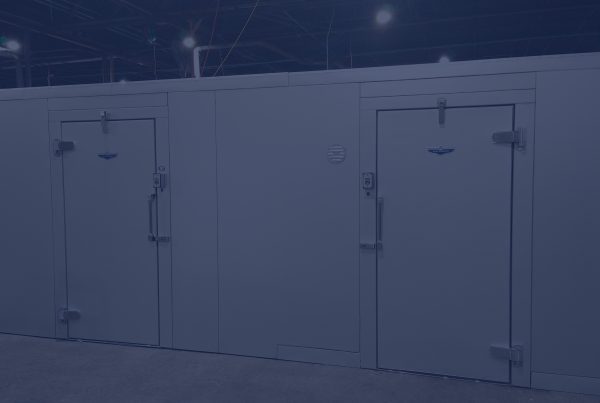Do you have a walk-in freezer that gets frost or ice accumulation on the walls or ceiling?

Ice on panels or the ceiling is not something to ignore.
There are several different possible causes for icing or frost. Infiltration of warm humid air into the freezer is the most likely culprit. The following tips will help you reduce or prevent this.
Check Your Gaskets – If there is icing near your door, check to make sure your door is sealing properly. Inspect the main gasket as well as the wiper gaskets and door sweep for any cracks or rips. Any rip can potentially allow air infiltration and cause icing issues. There are also gaskets in the seams between panels, which may have been damaged or cracked. You can use a bead of low-temp NSF-approved silicone caulk to help seal between the panels.
Inspect Your Door – If your gasket is sticking and freezing to the metal trim on the door frame, your freezer door’s heater wire may be burnt out or not strong enough to sufficiently heat up the trim. If your door is failing to close, test the operation of your hinges and door closer. You may have cam-rise or spring loaded hinges which should aid in closing the door enough to get it to the door closer. At this point, a roller at the top of your door closer may not be catching the hook enough to close the door. Sometimes a simple adjustment or bending can get the hook back into a position to come into contact with the roller. The hydraulic mechanisms in door closers can eventually fail or leak over the years, so check for any fluid leakage. To replace components on your door you can speak with your service provider, the manufacturer of the walk-in or order from walkincoolerparts.com. If the frame or the door is damaged, it may be able to be repaired or replaced.
Check Your Pressure Relief Port – Most walk-in freezers will be equipped with a heated pressure relief port to prevent pressure buildup. If your door has become hard to open it could be an indication that this vent is no longer working. Unscrew the faceplates on the interior and exterior to check for ice blockage or electrical failure. Either clear the blockage or order a new pressure relief port as necessary.
Check for Refrigeration Issues – If there is icing on or near your evaporator coil, you should contact a refrigeration contractor to check if the fan delay relay has failed or for other possible issues.
Insulation Failure – If you have a walk-in that is 10 or more years old (sometimes less), your insulation may be saturated with ice or water. This icing is an indication that the panel is no longer providing effective insulation and is increasing your energy costs. When the walk-in is turned off, water will leak from the panels if there is ice accumulation in them. If it’s just a certain panel giving your problems, you may be able to replace that panel (or the door). When it’s time to completely replace your walk-in, make sure you ask for a closed-cell insulation with water resisting properties.

Strip curtains can help prevent humid air from entering your walk-in.
Reduce the Humidity Entering the Walk-in – Employees may tend to leave the doors propped open when stocking the freezer. This can cause excess amounts of warm humid air to enter your walk-in. You can install hinges that self-close and a quality door closer that will complete the closing process for a tight seal. If you enter your walk-in from inside your building, run a dehumidifier near the walk-in to have the driest possible air entering it. To further prevent air infiltration, consider installing an air curtain or vinyl strip curtains above the door.
Hopefully after doing these checks you’ll be able to determine the cause of your freezer’s icing issues. If you know of any other potential causes or solutions to this problem, let us know in the comments.



